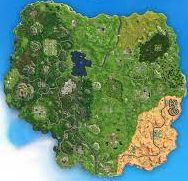On Saturday, November 4th, Fortnite, a 3rd person shooter game, saw its biggest day in history after the re-release of old features and the original battle royale map from 2017. Fortnite drew 44.7 million unique players, but how did the game bring back so many people after almost 6 years?

A very likely factor is nostalgia. Nostalgia is defined as “a sentimental longing or wistful affection for the past, typically for a period or place with happy personal associations”.
Based on interviews with Warren Township High School students, we can understand why that is the truth. “I came back because of the OG map and my favorite memory was like the first winter update in 2018 playing with friends,” shared a sophomore.
By having fond memories tied to both the game and specific features, Epic Games, (the developer of Fortnite), has been able to regenerate hype from Fortnite’s days as a cultural phenomenon. By packing 3 years of the game’s history into a single month, all players have the opportunity to relive their experiences; whether they started in season one or nine, “I started season 2, and my favorite memory was my first win,” a sophomore answered.
From a business perspective, Epic Games chose to release the OG map in order to gain more players before the release of their most ambitious projects: Fortnite Lego, Rocket Racing, and Fortnite Festival. They were able to guarantee players for their new games by regaining significance in pop culture through cashing in on nostalgia. Returning players were bound to stick around for at least a few days to check out the new content, which they did. Since its release on December 7th, Fortnite Lego has had at least a million players every day, and has consistently had more players than any other game mode; including the main mode, Battle Royale.
For now, Fortnite has retaken the online gaming landscape. How long this spike in popularity will last, only time will tell.



